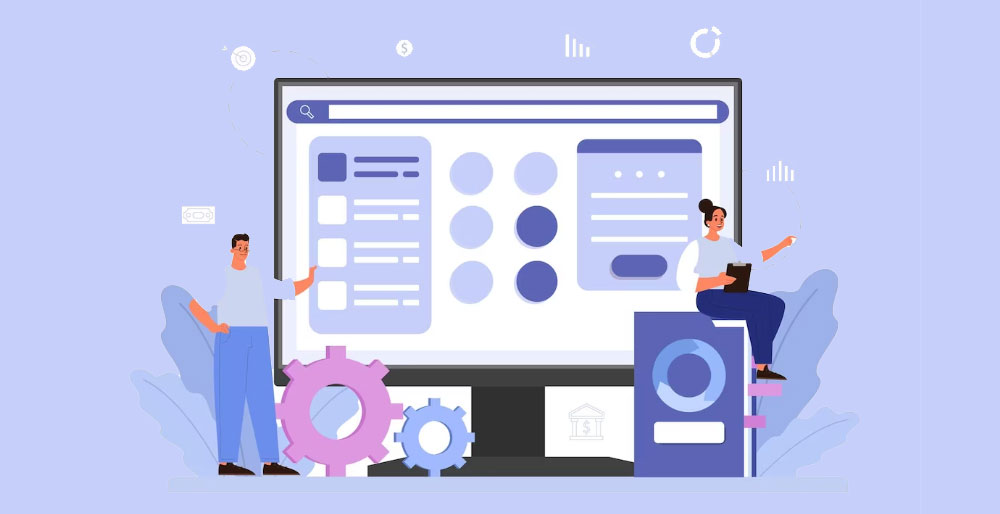Ever wondered how top-tier products seem to intuitively click with users? They’re not reading minds—product analytics is their secret sauce, the same potion we’re about to stir up for you.
Picture this: a dashboard spilling over with insights on customer behaviors, each metric a breadcrumb on the path to elevated user experience and beefed-up bottom lines. Dive in, and you’ll swim through a sea of data, from usage statistics to session replay secrets.
It’s where the rubber meets the road in the high-octane chase for tailor-fit features that your audience will adore.
By the time you’re done here, you’ll be armed with the smarts to leverage product analytics for punchier performance metrics. Expect to unlock:
- Strategies to polish user interaction.
- Tactics to untangle complex customer data platforms.
- And, oh yes, a roadmap to navigate through data visualization tools that bring your numbers to life!
Prepare to morph from simply churning out designs to designing with precision, all with a stash of powerful, data-driven decisions.
Key takeaways
- Optimizing User Experience: Product analytics is essential for refining user experience, identifying bugs, and ensuring user retention by revealing both strengths and areas needing improvement within the product.
- Data-Driven Product Improvement: By tracking user behaviors and conducting A/B tests, product analytics serves as a roadmap to guide product decisions, not just for fixing issues but also for discovering opportunities to enhance user satisfaction.
- Vital Metrics: The metrics to track vary based on the product and business objectives, but commonly include user acquisition, engagement, retention, and churn, alongside specific usage metrics like feature adoption or session length.
- Challenges and Insights: Challenges in product analytics include ensuring data quality and mastering complex tools to translate data into actionable insights. However, effectively interpreting this data is crucial for user retention and product development.
Understanding Product Analytics
What It Does

Okay, let’s dive in! You know how a product is like a book and its users are the readers? Well, product analytics is your personal book club discussion about that book.
It helps you understand how readers (or users) navigate through your book (or product), what chapters they love, where they put the book down, and more.
To put it in simpler terms, it involves capturing data about how users interact with a product and then analyzing that data to gain insights.
It looks at things like user activities, feature usage, and user retention. It’s a way to learn from your users without actually interrupting their experience.
Why Product Analytics is Crucial
So why do we need it? In short, it’s the difference between guessing and knowing. It tells you what parts of your product are hitting the mark and which ones are falling flat.
Think about it. How do you improve something if you don’t know what’s wrong with it?
Product analytics provides that crucial insight. It’s like having a conversation with each and every user, understanding their pain points, their needs, and their desires.
How Product Analytics Works
Now, how does it work? Imagine it like this: You own a coffee shop and each time a customer walks in, they leave invisible footprints. These footprints show where they walked, what they looked at, what they bought, and even how long they stayed.
In product analytics, the ‘coffee shop’ is your product, the ‘customers’ are your users, and the ‘footprints’ are data. Tools designed for it track these footprints, collect the data, and transform it into understandable insights.
When to Use Product Analytics

When should you use product analytics? Well, the simple answer is – always! From the moment your product is out in the world, product analytics should be your best friend.
It helps you understand your users from the get-go, making sure you can adapt and evolve your product to meet their needs.
The Role of Product Analytics in Different Teams
Let’s break down how it can benefit different teams in an organization.
Leadership
For those at the helm, it is a guiding light. It provides real-time insights into product performance, enabling leadership to make data-driven decisions.
Marketing
For the marketing mavens out there, it helps understand user behavior, aiding in the creation of targeted marketing strategies.
Customer Success
For customer success champs, it gives insights into user challenges, helping them provide better support and improve the overall user experience.
Product Management
For product management heroes, it acts as the voice of the user, guiding product development and enhancement.
Engineering
For the engineers, it helps pinpoint problem areas, informing where efforts need to be directed to improve product functionality.
Design
And for the designers, it reveals how users interact with the design elements of the product, guiding user-centric design decisions.
Implementing Product Analytics
So, you’re sold on the idea of product analytics. But how do you implement it? Let’s break it down.
Promoting Cross-Functional Collaboration
First things first, implementing it isn’t a one-team show. It requires a cross-functional effort.
Everyone, from leadership to design, needs to work together to leverage the insights derived from product analytics.
Prioritizing Data Management
Next up is data management. To make the most of product analytics, you need to handle the data effectively.
This means ensuring data quality, protecting user privacy, and maintaining data integrity.
Planning Product Analytics Instrumentation
Planning is key.
You need to identify what metrics matter to you, set clear goals, and decide how you’re going to measure success.
Implementing Effective Data Governance
Data governance is another critical aspect. It involves managing the availability, usability, integrity, and security of data used in an enterprise.
Connecting Multiple Products through Integrations
If you’re dealing with multiple products, integration is your best friend. It enables you to connect your products, helping you get a holistic view of your product suite.
Learning from Success Stories
Lastly, don’t shy away from learning from others. Success stories can provide valuable insights into how you can effectively implement and leverage product analytics.
Product Analytics vs Other Solutions
Comparison with Web and Mobile Analytics
Web and mobile analytics are awesome for tracking user behavior on websites or mobile apps.
But when it comes to deep-diving into product usage, product analytics takes the cake. It goes beyond just tracking user behavior, delving into feature usage, user retention, and more.
Comparison with Business Intelligence Tools
Business intelligence tools are great for analyzing business operations. But when you want to understand your users’ interactions with your product, product analytics is your go-to.
Comparison with Data Management Platforms
Data management platforms are fantastic for managing and organizing data. But for in-depth insights into user-product interactions, product analytics comes out on top.
Using Product Analytics Tools
Choosing the Right Tool
So, we’ve covered a lot of ground. You’re now well-versed in the importance of product analytics.
But how do you go about picking the right tool to facilitate it?
Just as each product is unique, each tool offers its own set of benefits. You’ve got to select one that fits your needs like a glove.
Look for a tool that aligns with your goals, supports your tech stack, and, of course, falls within your budget.
But remember, the most expensive tool isn’t necessarily the best. It’s all about finding the perfect fit for your product.
Examples of Product Analytics Tools

The market is chock-full of product analytics tools. Each one is like a different flavor of ice cream, offering its own unique taste.
You’ve got everything from Mixpanel and Amplitude to Heap and Pendo. The trick is to take a lick of each (metaphorically, of course!) and see which one makes your taste buds tingle.
Implementing a Product Analytics Tool
With a little preparation, it can be a breeze. Think of it like building a piece of IKEA furniture. You’ve got to plan, prepare, and then piece it together.
In this case, the planning involves identifying your key metrics. Preparation means ensuring your team is ready to utilize the tool. And piecing it together? That’s the actual implementation of the tool.
Key Metrics
Metrics are the bread and butter of product analytics. They’re the key to understanding your users and how they interact with your product.
Trends Analysis
This is all about spotting patterns over time. It’s like watching the waves on a beach.
They ebb and flow, showing you the changing tide.
Journey Analysis
Here, we’re looking at the user’s path through your product. Think of it like tracking their journey through a maze, seeing where they turn, where they pause, and where they exit.
Attribution Analysis
This is about figuring out what led users to your product. It’s like retracing their steps to see how they found your product in the first place.
Cohort Analysis
Cohort analysis is about grouping users based on shared characteristics and tracking these groups over time.
It’s a way of comparing apples to apples, instead of apples to oranges.
Retention Analysis
This metric helps you understand how many users stick around and keep using your product. It’s about figuring out how sticky your product is.
Churn Analysis
Churn analysis is the flip side of retention. It’s about identifying how many users stop using your product.
Think of it as understanding what drives users away.
Funnel Analysis
Funnel analysis is all about tracking users as they move through different stages of using your product.
It’s like watching them slide down a playground slide, noting where they speed up, slow down, or even jump off.
Conversion Analysis
This metric focuses on how many users take a desired action. It’s about understanding what convinces users to click that button, fill out that form, or make that purchase.
Milestone Analysis
Milestone analysis involves tracking user progress towards specific goals or events. It’s like marking checkpoints in a race, noting when and how users reach them.
Customer Experience Analysis
This is all about understanding how users perceive their interaction with your product. It’s about getting into their shoes and seeing the product from their perspective.
FAQ On Product Analytics
What Exactly Is Product Analytics?
It’s the compass for your product’s journey. By delving into user interaction data, you get clarity on what works and what sends users bolting.
It’s all about insights into customer behavior, preferences, engagement insights, and more. Think of it as your secret decoder ring for user satisfaction and product evolution.
How Does Product Analytics Impact Business Decisions?
Big time. It turns hunches into data-backed convictions. Businesses wave their analytics wand and transform quantitative data into strategic moves.
Dial up user experience, refine product features, or prune the ones confusing folks. It’s the GPS guiding your every product-related decision, steering you clear of guesswork.
Which Tools Do I Need for Product Analytics?
Google Analytics, Mixpanel, Amplitude—think of these as your gadget kit. Each has its own flair for dissecting product performance. They give you X-ray vision into usage stats and the nitty-gritty of conversion rate optimization. Choose based on the superpowers you need, from simple insights to deep dives.
Can Product Analytics Reduce Customer Churn?
Absolutely. Like a trusty watchdog, it barks out warnings when users stray. Dive into churn rates, spot the mayday signals early, and swerve into action with retention strategies. By understanding the why, you turn goodbye waves into high-fives.
Is Product Analytics Relevant for All Types of Products?
Sure is—digital, physical, hybrid; it doesn’t discriminate. Whether you’re peddling SaaS or handheld widgets, it’s your goldmine for user-behavior gold. Big Data isn’t picky, and every nugget you unearth is a potential game-changer, regardless of your product’s DNA.
How Does Product Analytics Help with Feature Prioritization?
Consider it your prioritization pal. It’s about feature adoption trends, spotlighting the stars and dimming the duds. It informs which features to develop, enhance, or sunset. By tracking what features users cling to, you’ll know where to channel your energy (and budget).
Does Product Analytics Play a Role in Customer Acquisition?
For sure. It’s not just about keeping your current crowd grinning. It’s a torchlight revealing pathways to potential fans. By understanding market trends and user preferences, you tailor your pitch and product to the pulse of fresh prospects. It’s like a magnet for the uninitiated.
How Often Should I Review My Product Analytics?
Make a habit of it. Regular check-ins are your product’s pulse checks—miss them, and you might miss the warning signs. Whether it’s a weekly ritual or a daily devotion, stay linked-in. It ensures your decisions ride the fresh wave of the latest engagement insights.
How Technical Do I Need to Be to Understand Product Analytics?
Wizards and newbies, all welcome. Today’s tools come with nifty data visualization to ease you in. No need for a PhD in numbers. Dashboards today are as friendly as a chat over coffee, dishing out complex data in digestible bites. The deeper you go, the more you might need to buff up on the tech-talk, though.
Can Product Analytics Help Improve the ROI of a Product?
Bingo. It’s like a financial advisor for your product’s wallet. Track where users drop cash or attention, marry that with conversion rate data, and you’ve got a roadmap to ROI heaven. It’s not just about what they’re buying, but the journey they’re taking to get there. Smart analytics equals smarter money moves.
Conclusion
All right, let’s wrap this with a shiny bow. We ventured deep into the thicket of product analytics and emerged, not just alive, but thriving with knowledge. It’s clear, this isn’t just number-crunching for kicks; it’s the engine driving user-centric designs that stick.
- We unearthed data we didn’t even know had legs—user interaction tracking, conversion rates, and engagement insights—transforming them into actionable design deliverables.
- We harnessed powerful data visualization tools, making sense of the complex without breaking a sweat.
- Our decisions, once gut-led, now stride on the sturdy legs of insights into customer behavior analysis and retention rates.
Armed with this, we stand primed to sculpt digital experiences that resonate, captivate, and—one dares to say—delight. So, let’s not just design; let’s design with intent, with precision, and let the data lead our dance on the pixels.
If you liked this article about product analytics, you should check out this article about product management competitive analysis.
There are also similar articles discussing product led marketing, product sustainability, product operations, and product portfolio management.
And let’s not forget about articles on product manager career path, lean product development, product engagement, and product evangelism.
- Professional Video: Cinematography Apps Like FiLMiC Pro - April 26, 2024
- Optimizing Your Shopify Store for Maximum Dropshipping Success - April 26, 2024
- Python Explained: What is Python Used For? - April 26, 2024









